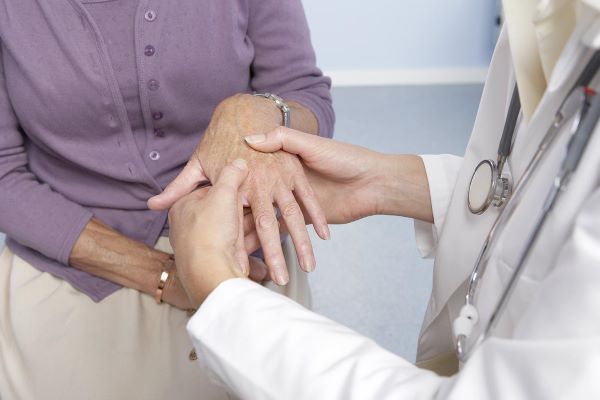
Rheumatoid Arthritis: Causes and Symptoms
Rheumatoid Arthritis (RA) is a severe chronic and disabling disease that affects many people's lives. This disease is present all around the world, with a prevalence rate of 0.3 to 1.2%. It is observed that the American Indian tribes and Alaskan Indians have the highest prevalence rate, while African and Asian countries show the lowest rate.
In America alone, 41 people out of 100,000 people are diagnosed with RA every year. Overall there are about 1.3 Americans who are diagnosed with RA. Women are more likely to develop RA three times more than men, with the development rate of 3.6% and 1.7%, respectively. And with the price of prescription medicines for rheumatoid arthritis, many turn to coupons and cards, such as the Buzz Rx prescription coupons, to save money on these meds.
RA may not be as deadly as other diseases, but with the paralyzing effect on its victims, it should be in our best interest to learn about Rheumatoid Arthritis.
What is Rheumatoid Arthritis? 
Rheumatoid Arthritis, or RA, is both an autoimmune and a chronic inflammatory disease that affects millions of people. RA occurs when your immune system mistakenly attacks the healthy cells and tissues, which then causes severe inflammation in the various affected parts of your body.
What differentiates RA from other arthritis, such as osteoarthritis, RA damages your joints' lining. It’s the reason why you would experience painful swelling, which can further lead to joint deformity and bone erosion. Even though RA mainly attacks the joints in your wrists, hands, and knees, it can also widely affect your other body systems such as your eyes, skin, heart, lungs, and blood vessels.
Another thing that makes RA unique is that when one joint from your arms or legs is affected, then there is a high probability that the same joint from the other arms or legs is also affected. This occurrence helps the doctors distinguish RA compared to the other forms of arthritides.
What causes Rheumatoid Arthritis?
Everyone can have rheumatoid arthritis, but it is more prevalent among women. For women, RA starts developing between the ages of 30 to 60 years old, while in men, it tends to come later in their life. There are also cases wherein children ages 17 years old and below experience RA. You can never know if you will have RA, so it is essential to understand its causes.
Even with extensive research, there is still no definite answer on what causes RA. However, multiple factors play a particular role in increasing the risk of someone developing RA. Here are the following:
Risk Factors
- Sex- As mentioned, females are more susceptible to developing RA than men, with the likelihood of two to three times.
-
Age- For women, RA commonly begins between 30 years old to 60 years old, whereas it occurs in later years for men. There is a case where children have RA, but it is safe to say that triggering the onset of RA is commonly highest in adults of middle or higher ages.
- Genetics/Family History- Anyone born with the specific genes called HLA or human leukocyte antigen class II genotypes is more likely to develop RA, especially if they are exposed to various environmental factors such as smoking and obesity. These genes can be passed on to the family, which is why having any member of your family with RA can significantly increase your chance of also developing it.
- Smoking- It is a fact that smoking is bad for your health. This still holds true because cigarette smoking raises the chance of developing RA and, more importantly, making it worse.
- Obesity- Aside from smoking, obesity is another environmental factor that increases the chance of having RA. According to multiple studies, the more overweight a person is, the higher their risk of developing the disease.
- Trauma/Injury- Having experienced any past fracture or bone damage, ligament damage, and joint dislocation, is another factor in triggering an RA onset.
What are the symptoms of rheumatoid arthritis? 
There are multiple treatments available for RA, but it would work best if it's diagnosed early. That’s why it is crucial to know early the various signs and symptoms of rheumatoid arthritis.
In the early stages of rheumatoid arthritis, it tends to affect the smaller joints, mainly the joints between the fingers and hands and the joints between the toes and the feet. However, as the disease progresses, the symptoms spread to the other joints in the body, such as wrists, elbows, shoulders, ankles, knees, and hips.
There are instances in RA where its symptoms can worsen, which are called flares, But there are also times where they get better, also known as remission.
The signs and symptoms when you have RA may include.
- Joint pain or ache in more than one joint
- Stiffness in more than one joint
- Swelling or tenderness in more than one joint
- The pain, ache, stiffness, tenderness, and swelling occurs in both sides of the body, such as feeling the symptoms in both knees or hands
- Fatigue or tiredness
- Fever
- Weight Loss
- Weakness
Remember that RA is not restricted to your joints only. It could also affect your eyes, skin, lungs, kidneys, heart, salivary glands, bone marrow, blood vessels, and nerve tissue.
Outlook
Even with how advanced we are in the medical field, there is still no definitive cure for Rheumatic Arthritis. There are multiple treatments available to try; however, they do not "cure" the disease but merely helps with the various symptoms you might experience if you have RA. This includes helping with the pain or inflammation, preventing further joint damage, and slowing the disease's progression or damage.